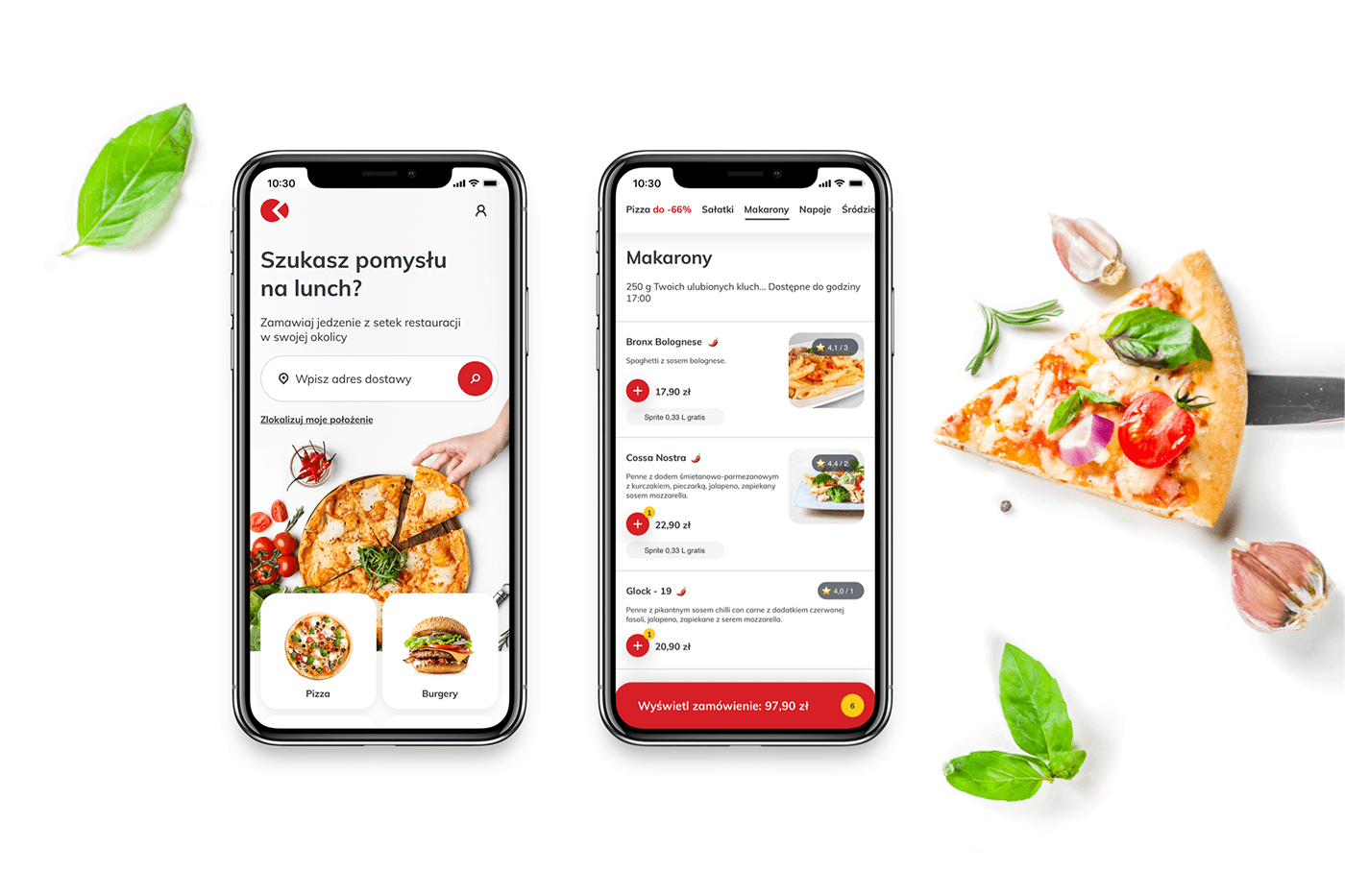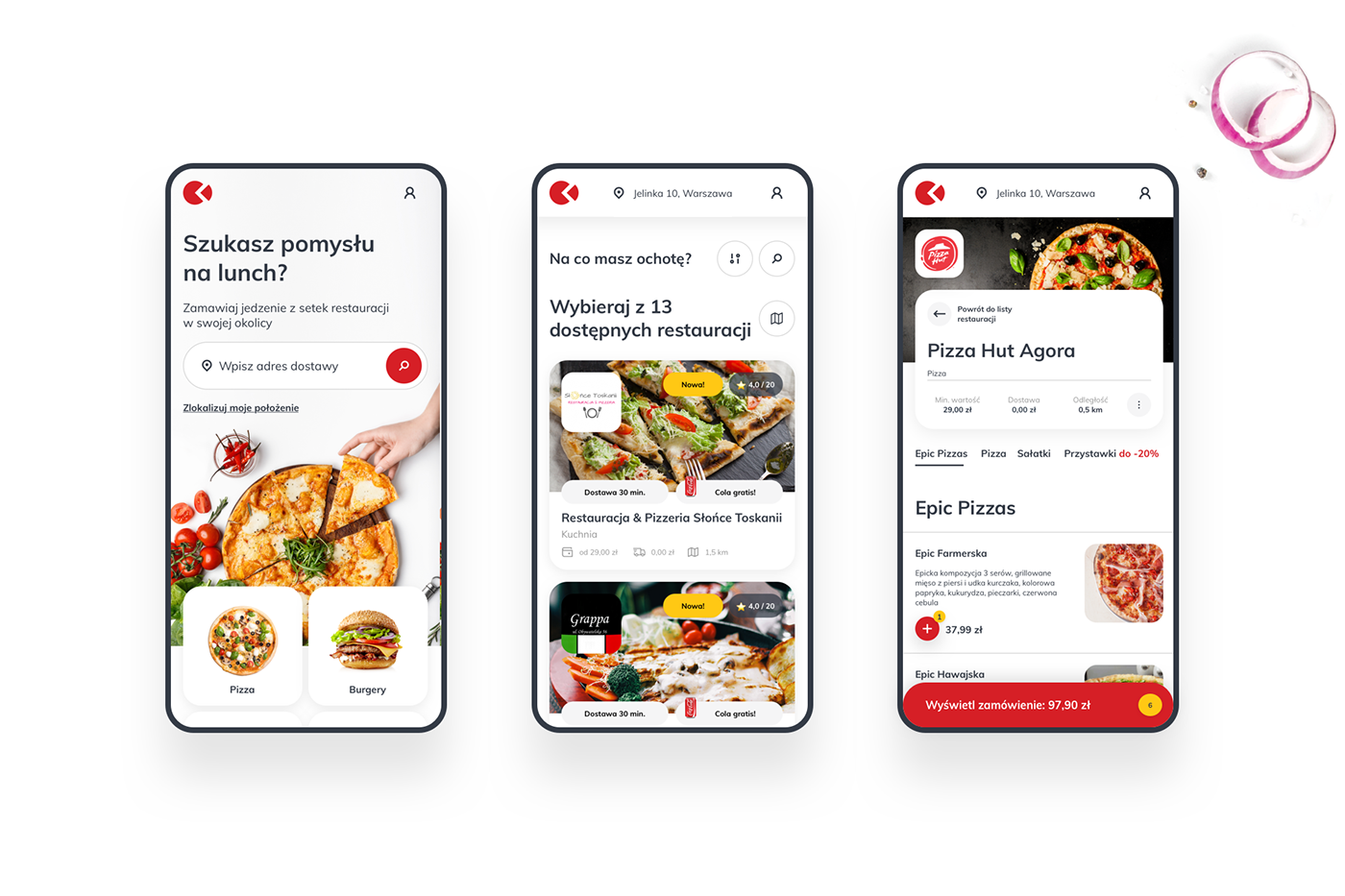
Food delivery portal for PizzaPortal
The projects were designed to improve the overall process of ordering food via PizzaPortal. The new customer experience and UI design were based on the CX research, Customer Journey Mapping project and UX tests delivered to PizzaPortal by Hycom.

Customer Journey Mapping
Defining goals – by engaging the client from the very beginning, we learned what the current state was, what target state was expected and when we would know that we have achieved success and how we can measure it.

Initial analysis – to understand the company, its processes and clients, we analyzed the materials owned by the client and the research carried out so far, e.g. NPS research, usability research, qualitative research on loyalty and we interviewed the company's employees who everyday have contact with users and their problems.
User Persona – after initial analysis we identified our target users with their goals and expectations of the experience.
CX research – then, we looked at the process through the eyes of the client - it was possible due to interviews with clients who use the portal on a daily basis, cognitive walkthroughs enabling expert assessment of clients' experience while using the service and web analysis, which revealed how users navigate the website.
Journey Maps – thanks to customer journey maps it became possible to understand the customer needs, motivations and way of thinking. The maps also allowed to understand what constitutes value for customers and what they do not care about so much during their journey. Such action allowed for very conscious designing of new experiences and significant improvement of existing ones.

Experience design workshops
Client decision map – designing experiences began with mapping the client's decision-making process. Questions arising in the mind of the client during his journey were recreated on the basis of knowledge acquired during interviews and journey maps.

User flow – based on the mind map we have built a user flow and selected screens that should be designed during the workshops.
Experience Design – each step of the user flow was designed as a micro-experience. It mapped the client’s needs, motivations, pains and suggestions on how the new experience should address them.

Low fidelity prototyping – main screens were created on paper in several versions, then workshop participants voted for the elements that best address the problems and needs of users. The paper prototype was the basis for creating the hi-fidelity prototype.
Wireframes – we created low-fidelity wireframes to study the functionality, understand user behavior, and prioritize interface elements containing comprehensive information on the critical process steps in order to improve it.
Wireframe prototype was tested with users. The purpose of the first tests was to verify the ease of use and pre-check the fit of the solution to customer’s needs. The prototype was revised and retested to obtain a version that cannot be improved.


Redesigned experience
Eventually, based on accumulated knowledge, we have created a modern, light and clear user interface for maximum simplification of the customer's shopping path. Moreover, we used eye-catching photos to help identify the types of the offered cuisines and we prepared dedicated illustrations to allow a faster understanding of the process.
The prototype of the final experience was tested with the clients. All major aspects of the customer experience were examined. After making corrections resulting from the research, the final prototype became the starting point for creating the system design and then starting further design work aimed at building the solution.




















